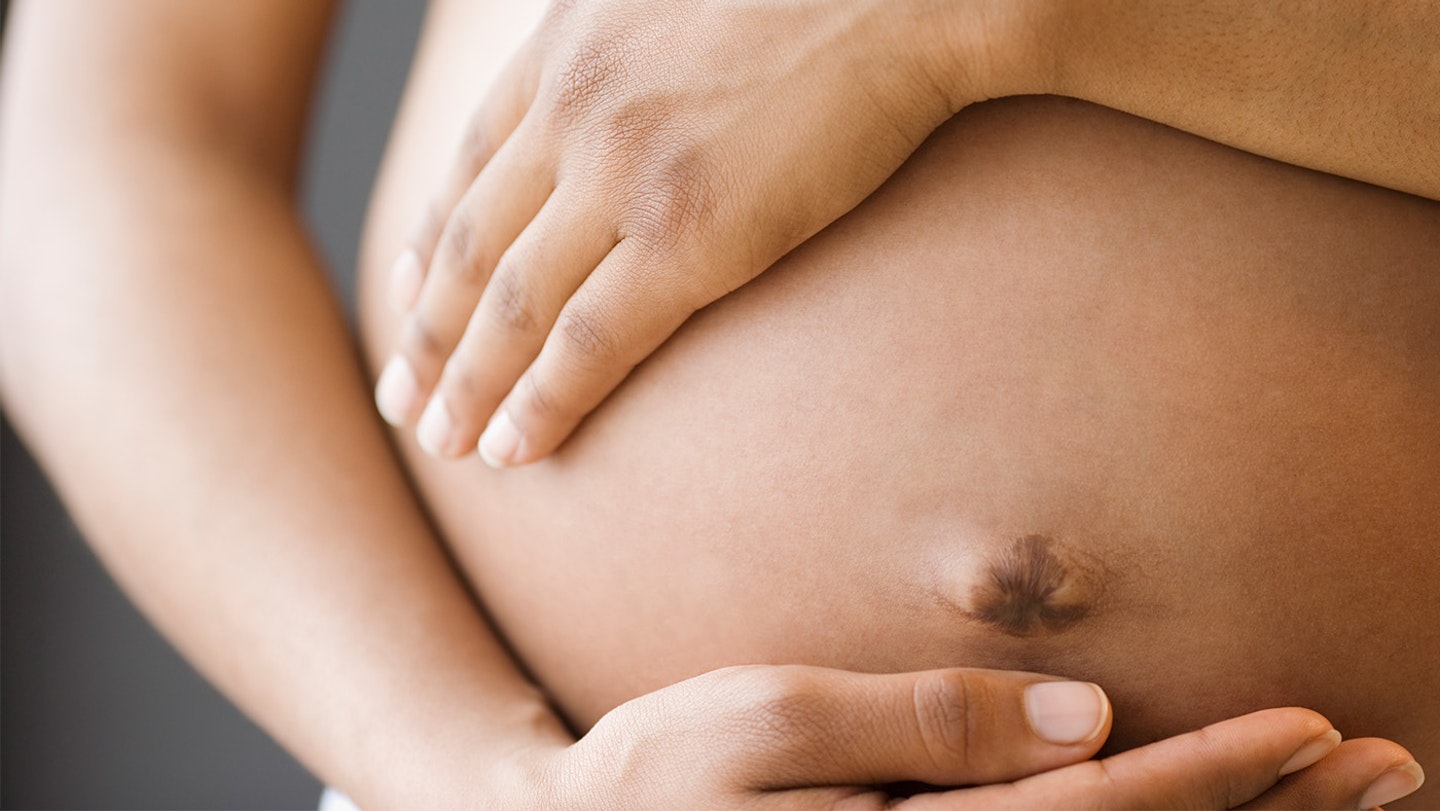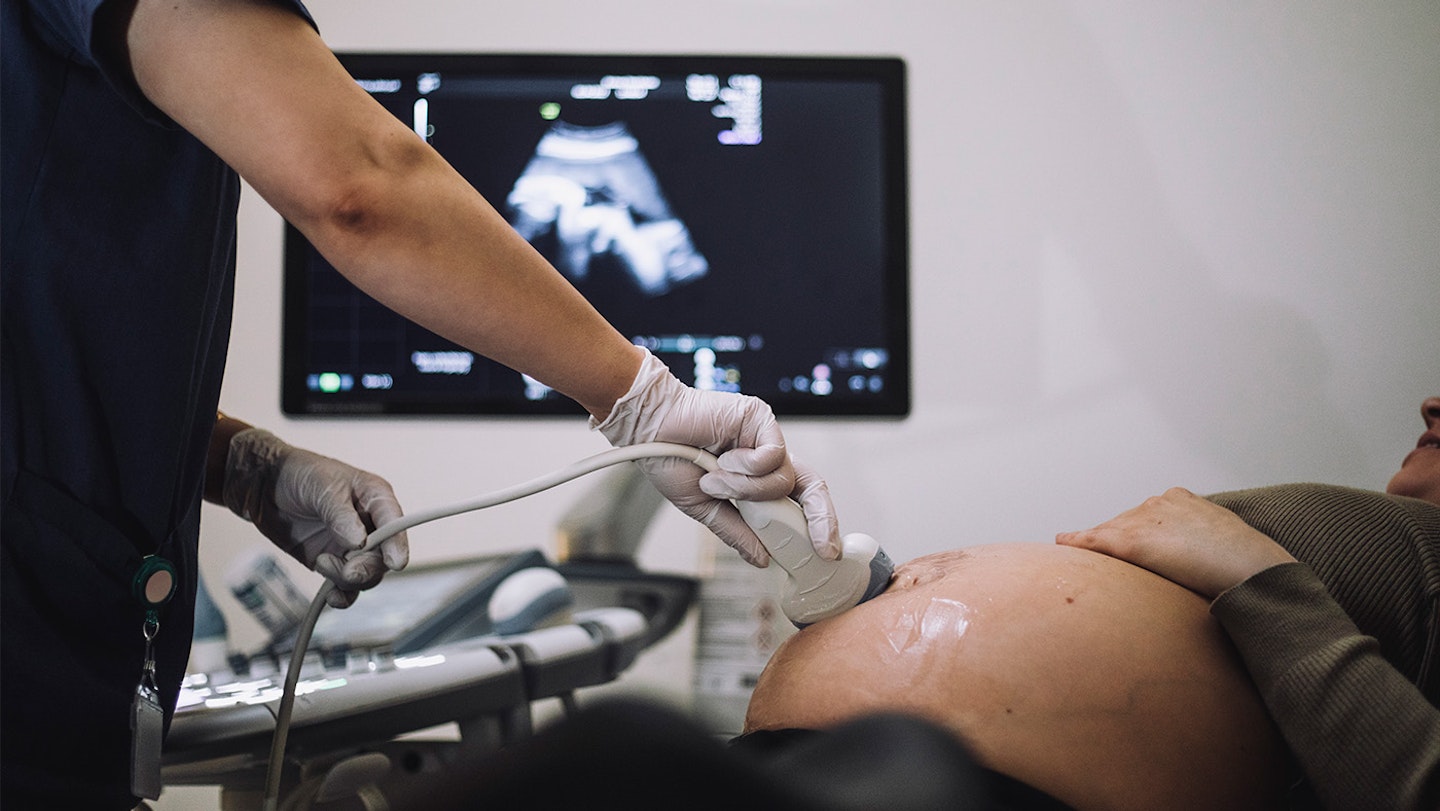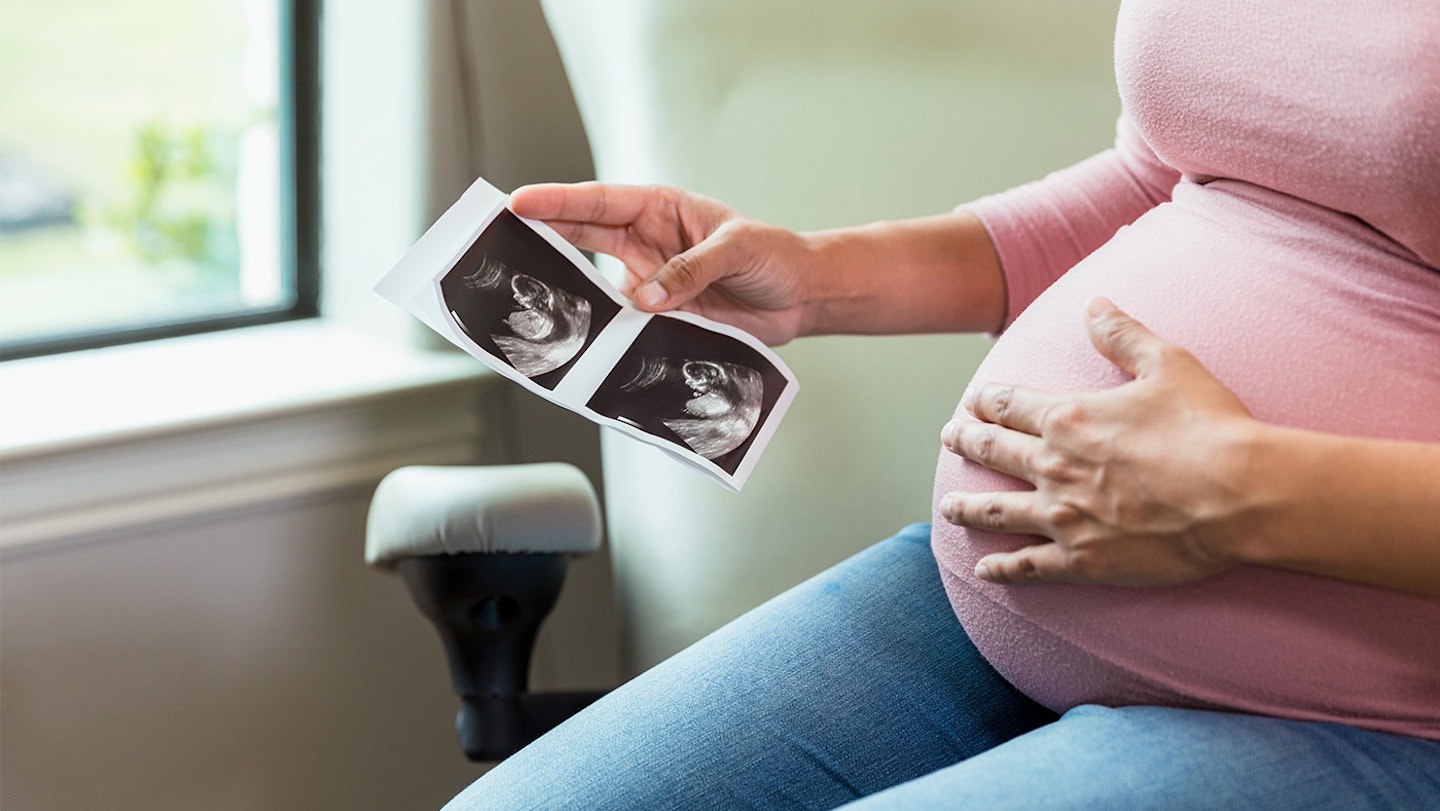
Medically Reviewed by: Dr. Tiffany Pham
Oligohydramnios is a condition in pregnancy where the levels of amniotic fluid are lower than what is considered normal. Amniotic fluid is a water-like substance that surrounds the baby inside the uterus and acts as a cushion for the baby and umbilical cord, it acts to create space between the uterus and baby. It performs several functions: it can provide the baby with nutrients such as proteins, antibodies, and vitamins. It also encourages the development of certain organ systems in the baby.
How common is Oligohydramnios?
It affects approximately 1-5% of pregnancies at term, meaning pregnancies that reach 37 weeks of gestation or beyond. In pregnancies that go beyond the due date, or 40 weeks, the rate of oligohydramnios can increase up to 10%.
What are the causes of Oligohydramnios?
Oligohydramnios can be the result of conditions that affect the mother, placenta, or baby. Maternal conditions such as hypertensive disorders of pregnancy, poorly controlled diabetes, kidney disease, or certain medications taken by the mother can result in oligo.
Blood clots in the placenta or placental abruption are conditions that can affect the placenta which may also result in oligo. When your water breaks or the amniotic sac ruptures and leaks fluid over time, this can also result in oligo.
The leaking may occur slowly and may not be noticeable, therefore oligo can develop from the slow leak. Certain infections, congenital defects (birth defects) of the baby’s urinary tract, genetic defects, or restricted growth of the baby may also result in oligo. Twin pregnancies may develop a specific condition called twin-twin transfusion syndrome that can also result in oligo. Sometimes, the oligo can occur without a specific cause.

What will happen if amniotic fluid is low?
The amniotic fluid acts as a cushion and buffer between the baby and the uterus, allowing for the growth and development of the baby and its organs. The amniotic fluid is often used as a diagnostic tool by medical providers, the fluid itself can be used to diagnose certain infections or genetic abnormalities affecting the baby.
A normal, healthy amount of amniotic fluid also generally indicates there is sufficient blood flow to the uterus and is a good indicator of the health of the pregnancy. The result of low amniotic fluid depends on the cause as well as when during the pregnancy the low fluid is diagnosed. The earlier on in the pregnancy that oligo occurs, the more severe the outcomes may be.
When the amniotic fluid levels are too low, it can affect the growth and development of the baby. This may lead to birth defects due to poor development and growth. If the fluid is low due to the membranes leaking fluid, you may go into labour, even if the leaking fluid occurs before your due date.
The low fluid may also be a sign that the baby is not getting enough blood flow and puts the pregnancy at high risk as it can be predictive of a poor pregnancy outcome. You may have to deliver earlier than your due date if the conditions listed result in low fluid as it is generally a sign that the condition is deteriorating and affecting the pregnancy negatively.
What are the signs of low amniotic fluid?
Oftentimes the low amniotic fluid is discovered via an ultrasound done by your doctor. If the cause of low amniotic fluid is due to leakage from ruptured membranes (or your water breaking), you may have symptoms consistent with leaking fluid intermittently, or finding that your underwear are constantly wet even if you have not had any accidents.
If your belly (or the height of your uterus) is not measuring consistently with how far along in the pregnancy you are, it may be a sign of low fluid levels or indicate growth issues with the baby.

What are the complications of Oligohydramnios?
The complications of oligo largely depend on when the condition is diagnosed in pregnancy. The earlier the diagnosis, for example in the second trimester, the more severe the complications can be. With low fluid levels, the baby may not be able to grow appropriately due to the compression of the uterus leading to birth defects.
The baby’s lungs may be underdeveloped due to the low fluid levels as well. Stillbirth and miscarriage can also occur with oligo in the early parts of pregnancy. Later in the pregnancy, oligo can be associated with early delivery (preterm birth) as well as growth restriction of the baby.
Oligo can also affect labour and the delivery process. Patients with oligo have a higher risk of stress to the baby during labour which can cause changes in the baby’s heart rate, the umbilical cord can be compressed more easily with low fluid levels, and there may be an increased risk of needing a caesarean delivery.
How is it diagnosed?
Oligo is diagnosed via ultrasound. The parameters include the amniotic fluid index being less than or equal to 5cm, or the single deepest vertical pocket of amniotic fluid being less than 2cm.
What are the treatment options?
There is no direct treatment currently available that will reverse or fix oligohydramnios. Management of oligohydramnios also depends on the cause.
If the oligohydramnios is the result of a condition that can be managed such as maternal diabetes, poorly controlled blood pressure etc, better control of those conditions may help to prevent the worsening of the low fluid levels. If your low fluid levels are the result of ruptured membranes, some type of sealant or patch may be recommended to address the area of leakage.
If the oligo is an isolated event, associated with infections, genetic abnormalities or birth defects, management typically includes close monitoring of the pregnancy with ultrasounds and special testing to monitor the baby’s heart rate and overall well-being. Your medical provider may recommend that you increase your hydration levels and drink more fluids. You may be admitted to the hospital to be given fluids through an IV.
In more severe cases, particularly those cases that arise earlier in the pregnancy, you may be offered a procedure called transabdominal amnioinfusion. This procedure allows your doctor to instil fluids back into the uterus to increase the amniotic fluid levels.
What is the Oligohydramnios sequence?
The Oligohydramnios sequence describes a set of characteristics caused by severely low or absent levels of low amniotic fluid. This condition is extremely rare (1 in 4000 pregnancies) but carries a high rate of mortality to the baby. This condition is typically associated with birth defects of the kidney or urinary tract of the baby which leads to decreased production of urine and amniotic fluid.
Due to the low or absent levels of fluid, signs of compression inside the uterus may include a flattened nose, low set ears, a recessed chin. The lungs are severely underdeveloped, which causes severe respiratory issues that ultimately may lead to death. Limb defects or defects of the spine may also develop due to the high levels of compression by the uterus.
Is oligohydramnios considered high-risk?
The presence of oligo generally indicates that there is an underlying issue with the pregnancy that is likely causing the low fluid levels. These conditions typically put the pregnancy into the high-risk category. Even if the oligo is unexplained, or has no known cause, when the oligo is diagnosed, the pregnancy is treated as high risk. As such, the remainder of the pregnancy is more closely monitored with ultrasounds or special testing to monitor the baby’s heart rate and well-being. An early delivery before the due date is typically recommended for this condition.
Are there distinctions between the pregnancy stages for oligohydramnios?
Oligo which occurs earlier in pregnancy, such as in the second trimester, may have more poor outcomes compared to oligo which develops in the latter part of the pregnancy. The longer the oligo persists, the more likely complications can develop, interventions to alleviate the oligo such as amnioinfusion may cause complications as well.
When oligo affects the latter parts of the pregnancy or in the third trimester, early delivery before the due date may be warranted. The earlier the baby is delivered, the less developed the baby may be which may contribute to the complications of prematurity.

Can a baby survive Oligohydramnios?
Yes, babies can survive oligohydramnios, particularly if the condition is diagnosed later in the pregnancy (e.g. the third trimester). The severity and outcomes of oligohydramnios also depend on the cause in addition to the time at which it was diagnosed.
Can Oligohydramnios be prevented?
There is no single method that we have found to prevent oligohydramnios. In cases where certain conditions are associated with oligo such as birth defects related to the kidneys or urinary tract, genetic abnormalities, infection, etc, oligo is not preventable. For some maternal conditions such as gestational diabetes or hypertensive disorders of pregnancy, optimising those conditions in pregnancy can prevent oligohydramnios from developing.
Sources
Keilman C, Shanks AL. Oligohydramnios. [Updated 2022 Sep 12]. In: StatPearls [Internet]. Treasure Island (FL): StatPearls Publishing; 2024 Jan-. Available from: https://www.ncbi.nlm.nih.gov/books/NBK562326/
Fitzsimmons ED, Bajaj T. Embryology, Amniotic Fluid. [Updated 2023 Jul 17]. In: StatPearls [Internet]. Treasure Island (FL): StatPearls Publishing; 2024 Jan-. Available from: https://www.ncbi.nlm.nih.gov/books/NBK541089/
Bachhav AA, Waikar M. Low amniotic fluid index at term as a predictor of adverse perinatal outcome. J Obstet Gynaecol India. 2014 Apr;64(2):120-3. doi: 10.1007/s13224-013-0489-9. Epub 2013 Dec 18. PMID: 24757340; PMCID: PMC3984654.
Molla M, Mengistu Z, Tsehaye W, Sisay G. Magnitude and associated factors of adverse perinatal outcomes among women with oligohydramnios at 3rd trimester at University of Gondar comprehensive specialized hospital, North West Ethiopia. Frontiers in Global Women's Health. Vol 3; 2023. https://www.frontiersin.org/articles/10.3389/fgwh.2022.958617
Wei Gu, Xinrong Zhao, Yi Wu, Renyi Hua, Li Gao, Yanlin Wang. Amnioinfusion for the Management of Severe Oligohydramnios during the Second Trimester: A Retrospective Observational Study. Clin. Exp. Obstet. Gynecol. 2023, 50(7), 145. https://doi.org/10.31083/j.ceog5007145
Taneja A, Arora K, Chopra I, Naik SS. Pregnancy Outcomes in Isolated Oligohydramnios during Second Trimester: A Case Series. J Clin Diagn Res. 2017 Aug;11(8)
Van Teeffelen S, Pajkrt E, Willekes C, Van Kuijk SM, Mol BW. Transabdominal amnioinfusion for improving fetal outcomes after oligohydramnios secondary to preterm prelabour rupture of membranes before 26 weeks. Cochrane Database Syst Rev. 2013 Aug 3;2013(8)
Shastry SM, Kolte SS, Sanagapati PR. Potter's Sequence. J Clin Neonatol. 2012 Jul;1(3):157-9. doi: 10.4103/2249-4847.101705. PMID: 24027716; PMCID: PMC3762025.
About the expert
Dr. Tiffany Pham is a board-certified obstetrician and gynaecologist and medical advisor for Flo Health, based in Houston, Texas. Pham is passionate about helping women get access to necessary health services and medically-accurate health information and better understand their bodies.
